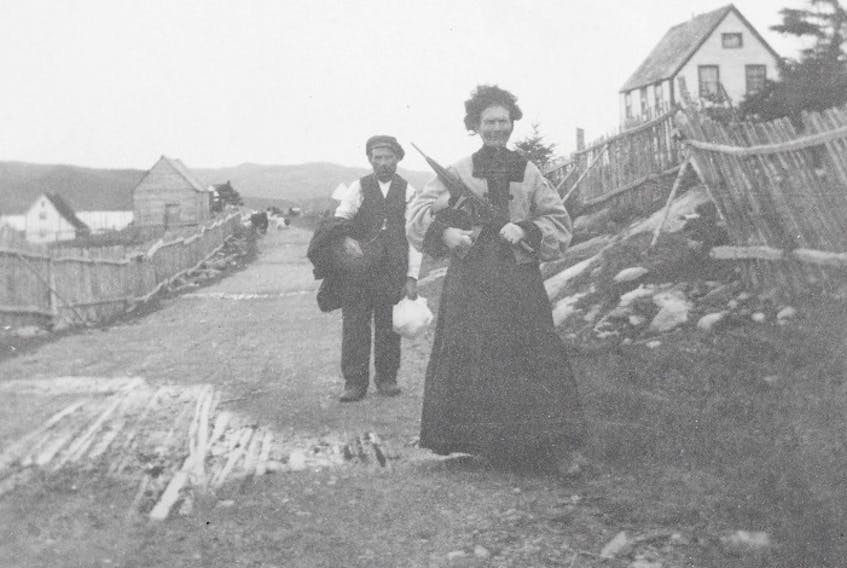American photographer Edith S. Watson’s 40-year love affair with Newfoundland and Labrador and the stunning photos she produced here are the focus of a new book.
“Working the Rock: Newfoundland and Labrador in the photographs of Edith S. Watson, 1890-1930” was published last fall by Boulder Publications.
It’s Toronto author Frances Rooney’s second book about Watson, an adventure-seeking Connecticut woman with a keen freelance mind. She made numerous trips to outport Newfoundland and coastal Labrador.
Watson sold her work from here and other travel destinations to magazines, tourism brochures and any other outlet that would pay for and credit the photographs.
The last 20 years of her travels to this province were with her life partner, writer Victoria Hayward, with whom she travelled openly as a couple.
The photos included in “Working the Rock” bring the reader to a place not typically explored during the time period — the ordinary world of women and girls, who — as the publisher notes — were almost invisible in photographs of the early 20th century.
Related story:
Photographer documented early Newfoundland and Labrador women at work
For instance, one photo shows a woman hoeing potatoes in Petty Harbour, another shows a woman milking a cow in Hermitage, while yet another depicts a woman hauling two buckets of water, each hung from the end of a plank.
A photograph from Shoe Cove focuses on a toddler being fed by her mother while a cat laps milk nearby.
A woman and a young girl haul hay on their backs in Fortune Harbour in yet another.
“If the preponderance of women subjects had occurred only in Newfoundland,” writes Rooney, “it might be possible to speculate that Edith photographed so many women because men were away. But her focus was women wherever they went. And because it was, she has left a collection rich in the kinds of images seen nowhere else.”
She and Hayward eventually wrote a book about Canada — “Romantic Canada” — and it included a chapter on Newfoundland and Labrador.
Rooney first discovered Watson in the 1970s, and her extensive research has included poring over not only photos, but documents, letters and other artifacts luckily saved from Connecticut looters by Watson’s late cousin, Bob, and his wife, Lois.
Rooney notes no one may ever know what Watson’s fascination was with this place. But she clearly loved it, and photographed its beauty and daily rigours painstakingly.
While here, Watson — and, later, she and Hayward — boarded with local families, which allowed her an insight into their daily lives.
Besides the insight into the routines of women and girls, the book depicts the landscape of the outports and of coastal Labrador.
While Watson was not a wordsmith, preferring the camera to tell her story, Hayward left behind diaries that shed some light on their fascination with Newfoundland and Labrador.
“The charm they felt of the places is certainly evident,” Rooney said in a telephone interview from her Toronto home.
That Watson pursued her travels with passion despite the obstacles of the time — dragging clunky camera gear and large glass negatives in trunks aboard steam ships and sailing vessels, and by cart on land — was also remarkable, especially for female travellers and businesswomen who might not be as readily accepted by their male peers.
And there was also the sheer danger of some of the methods of travel they chose.
Hayward described a harrowing crossing to Labrador in “Romantic Canada”: “The Invermore blew out her tubes somewhere down the coast, and had to put back to Saint (sic) John’s, and we had to wait several days for her substitute, who finally arrived in Twillingate in the middle of the night, so that we went up the ladder over her side with the bags of mail at two o’clock in the morning, carrying with us a feeling that perhaps we ought not to be going, as two old fellows encountered on the pier the night before had said, in the face of a rather threatening sky, that it was ‘too late to go down on the Labrador.’”
“Clearly, they went anyway, and lived to tell the tale,” Rooney writes.
Email: [email protected]
Twitter: bsweettweets









